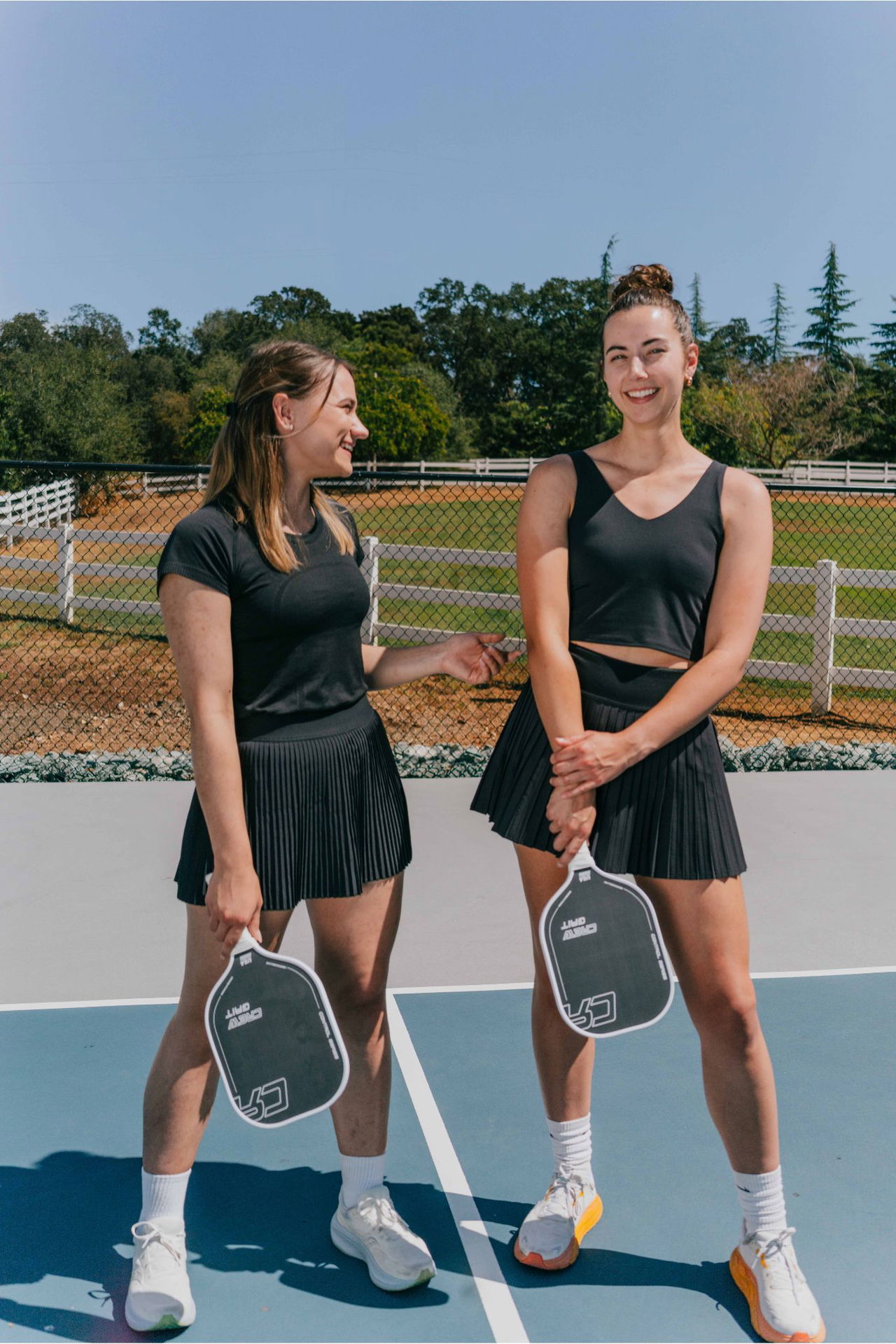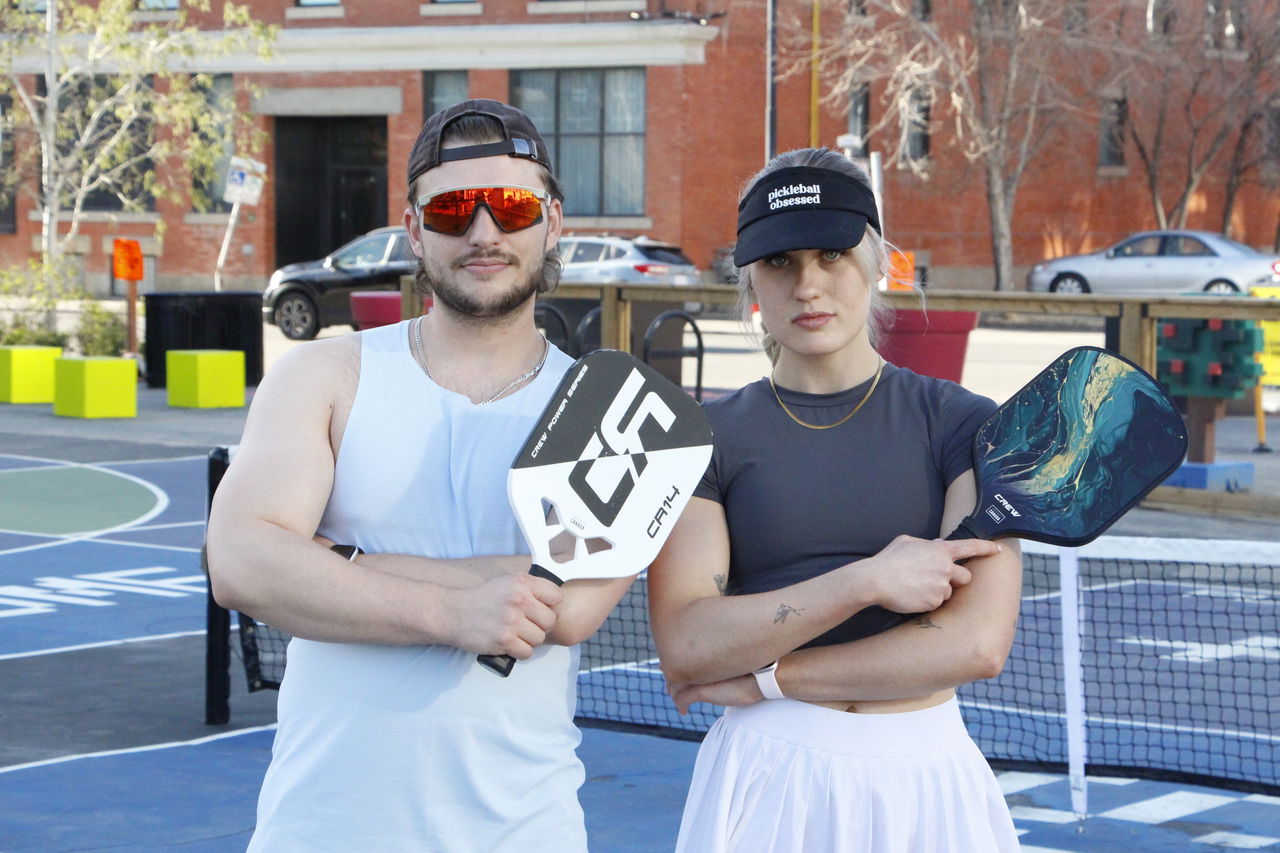Pickleball Guide
What Is Pickleball?
Fast, fun, and easy to learn—pickleball combines tennis, badminton, and ping-pong into one exciting game. Loved for its social play and accessibility, it’s taken the world by storm. Whether you’re a beginner or a competitor, this sport is for you. Ready to join the craze? 🚀
6 min. read

Written by
Carter Clark
Published
Dec 4 2024
Pickleball is a fast-paced, easy-to-learn sport that blends elements of tennis, badminton, and ping-pong. It’s played on a compact court using a pickleball paddle. and a perforated plastic ball, making it ideal for players of any skill level.
Whether you're competitive or just looking for casual fun, this game has something for everyone.
Key Takeaways:
Pickleball blends elements of tennis, badminton, and ping-pong. It originated in 1965 as a fun, family-friendly backyard game.
The sport’s popularity lies in its accessibility. It offers simple rules and social gameplay suitable for all ages and skill levels.
From humble beginnings to a global phenomenon, pickleball is now played in over 70 countries with organized tournaments and professional leagues.

The History of Pickleball
Pickleball originated in the summer of 1965 on Bainbridge Island, Washington, thanks to three dads—Joel Pritchard, Bill Bell, and Barney McCallum—who were looking to keep their bored kids entertained. Using a badminton net, ping-pong paddles, and a perforated plastic ball, they created a simple and fun game.

Early Days: A Backyard Experiment
Initially, the game was little more than a backyard pastime. The dads lowered the badminton net to make the ball easier to hit and built a smaller court.
The focus was on keeping the game inclusive so everyone, including children, could join. It quickly became a family favorite, and the rules began to solidify.
From Hobby to Sport
By the 1970s, pickleball had outgrown its backyard origins. McCallum and his family started making paddles from plywood, and the first official pickleball court was built in 1967. The sport began spreading beyond Bainbridge Island, finding fans in schools, parks, and recreation centers across the U.S.
Organized Play and National Recognition
In 1984 the USA Pickleball Association (USAPA) was formed to standardize rules and promote the sport nationwide. The association’s efforts brought pickleball into organized competitions, and it wasn’t long before tournaments popped up nationwide.
Modern-Day Pickleball

Today, pickleball is one of the fastest-growing sports in the world. It’s played in over 70 countries, with millions of enthusiasts of all ages.
The game has evolved into professional leagues, international tournaments, and even televised matches. Despite its growth, pickleball has stayed true to its roots—being a game that’s fun, easy to learn, and accessible to all.
Pickleball's history is a testament to its universal appeal. From a family’s backyard to a global stage, this humble game has proven that sometimes, the simplest ideas are the most enduring.
Why Is Pickleball So Popular?
Pickleball has skyrocketed in popularity for several reasons.
First, it's highly accessible. You don’t need fancy equipment or elite-level fitness to start. A paddle, a ball, and some open space are all you need.
Second, it’s a social game. The smaller court and doubles format encourages interaction, making it a favorite for community centers and social clubs.
Finally, it’s just plain fun. The rallies are quick, the learning curve is short, and the competition is thrilling without being overwhelming.
Where Did the Name Pickleball Come From?
The name "pickleball" often leaves people scratching their heads. Legend has it that the sport was named after a family dog, Pickles, who loved chasing stray balls during games.
However, another story suggests the name came from a rowing term, "pickle boat," which refers to a crew made up of leftovers from other teams—much like how pickleball combines aspects of other sports.
While the dog story is charming, the "pickle boat" explanation is considered more likely, as it showcases the sport’s quirky and inclusive beginnings.
Who Can Play Pickleball?

Pickleball is a game for everyone. Its simple rules and small court size make it accessible to people of all ages and fitness levels. Whether you are a seasoned athlete or a beginner, you can jump into the action without much practice.
Children enjoy it because it’s easy to learn, while older adults appreciate its low-impact nature, which is gentler on the joints compared to sports like tennis. Pickleball is also ideal for families, as it bridges generational gaps, bringing people together for a few laughs and friendly competition.
Whether you’re 8 or 80, this game invites you to grab a pickleball paddle and play.
Pickleball Courts and Setup
Pickleball courts are smaller than tennis courts. They measure 20 feet wide by 44 feet long and are divided by a net that's 36 inches high at the edges and 34 inches high at the center.
Key areas include the kitchen (the non-volley zone), a 7-foot section near the net where players cannot hit the ball out of the air, and the service boxes for serving. The setup is straightforward.
Many tennis or badminton courts can be converted into pickleball courts using temporary nets and markings. If you're playing recreationally, chalk or tape can create boundaries on any flat surface.
This flexibility allows pickleball to be played in parks, gyms, driveways, or even cul-de-sacs, making it an incredibly accessible sport.
How to Play Pickleball: Simple Rules to Get You Started
Playing pickle ball is straightforward, but there are a few key rules you’ll want to know:
The Serve
: Serve underhand, diagonally across the court, keeping the ball below your waist.
Double Bounce Rule
: The ball must bounce once on each side before players can volley (hit it without a bounce).
Stay Out of the Kitchen
: The “kitchen” is a non-volley zone near the net. You can’t step in it to smash a ball.
Scoring:
Only the serving team can score, and games are typically played to 11 points, with a 2-point lead needed to win.
These simple pickleball rules make the game accessible to beginners while still offering depth for advanced players.
Tips for Playing Pickleball Like a Pro

Playing pickle ball is straightforward, but there are a few key rules you’ll want to know:
Start with Consistent Serves
: Focus on accuracy rather than power. A reliable serve immediately puts your opponent on the defensive.
Dominate the Kitchen Line
: Stay close to the non-volley zone (the "kitchen") to control the game with quick volleys and sharp angles.
Master Dinking
: Dinks are soft, controlled shots just over the net. They keep your opponents guessing and force mistakes.
Communicate with Your Partner
: Clear communication prevents collisions and missed shots in doubles. Call “mine” or “yours” to stay coordinated.
Stay Light on Your Feet
: Quick footwork allows you to reach tricky shots and maintain balance during fast rallies.
Practice Patience
: Avoid over-hitting. Pickleball rewards control and strategy more than raw power.
These simple yet effective tips can elevate your pickleball game, whether you’re playing for fun or competing to win.
Final Thoughts
Pickleball is more than just a skill game—it’s a social phenomenon. From its quirky name to its addictive gameplay, it’s no wonder this sport has captured hearts worldwide.
So grab any pickleball paddle, gather some friends, and experience the thrill of playing pickleball for yourself! Who knows? You might fall in love with it.
Gear up for your next pickleball match with Crew Pickleball! Explore our customized paddles and premium gear for players of all levels.
Have questions? Contact us today!

Carter Clark
@Carter Clark
